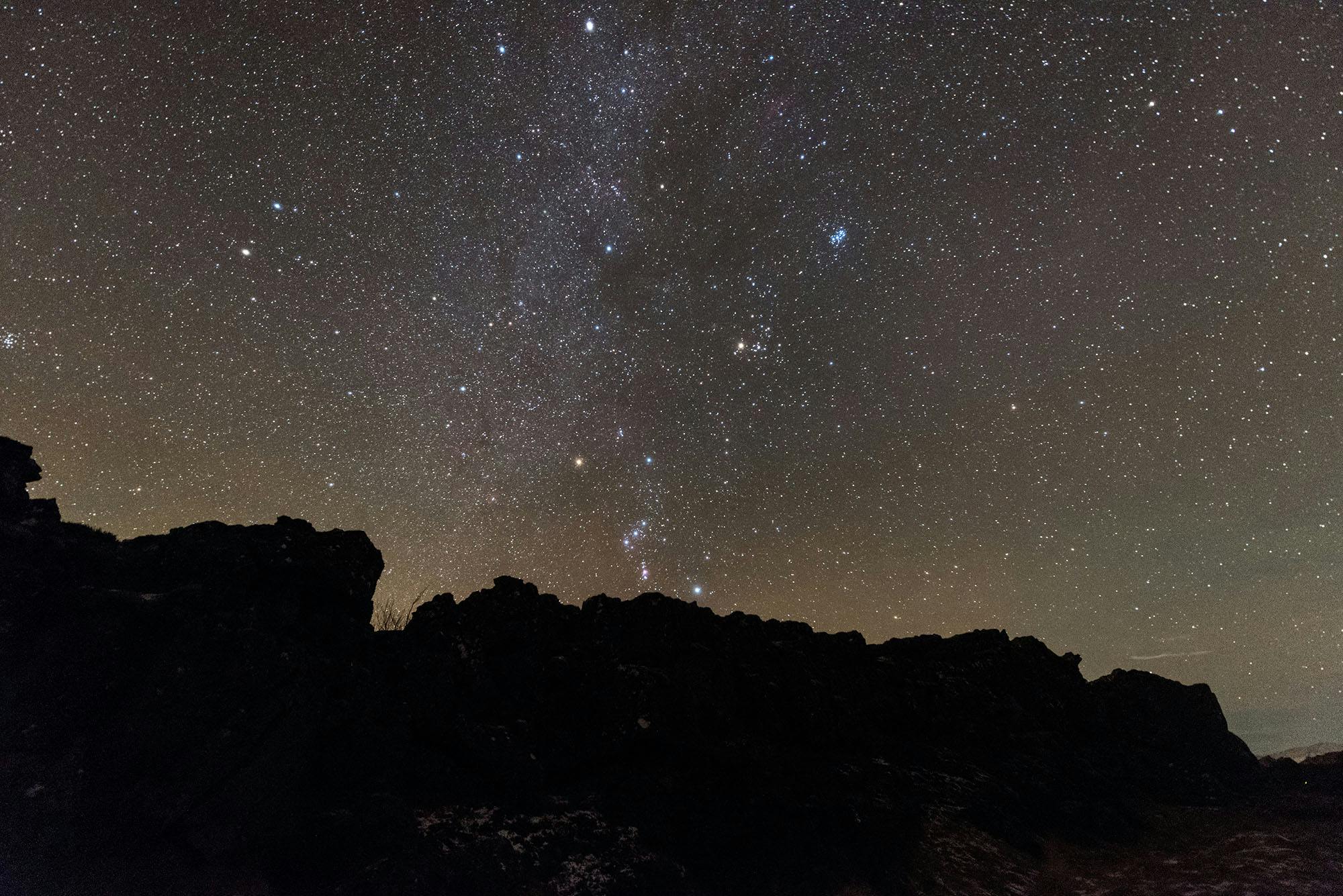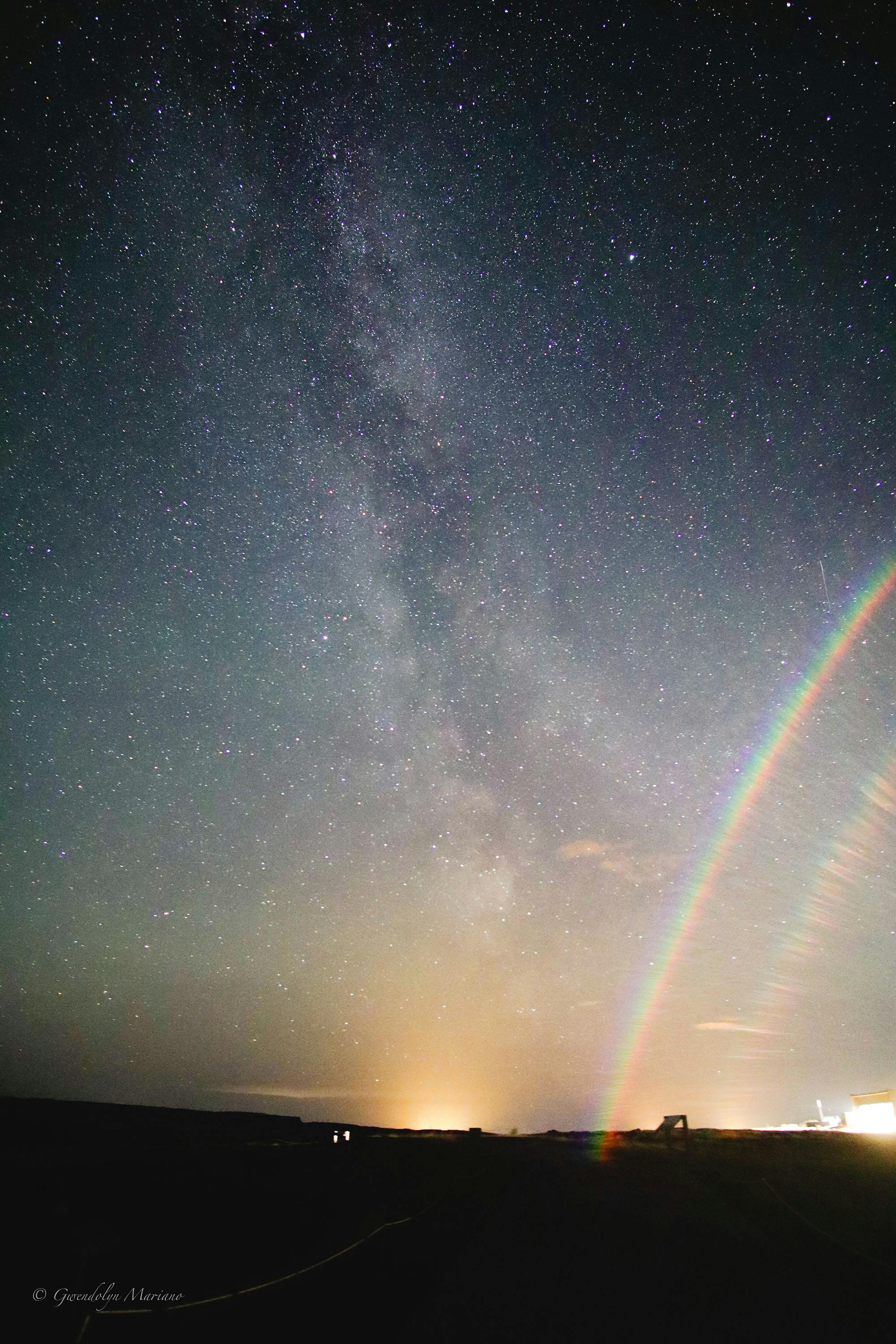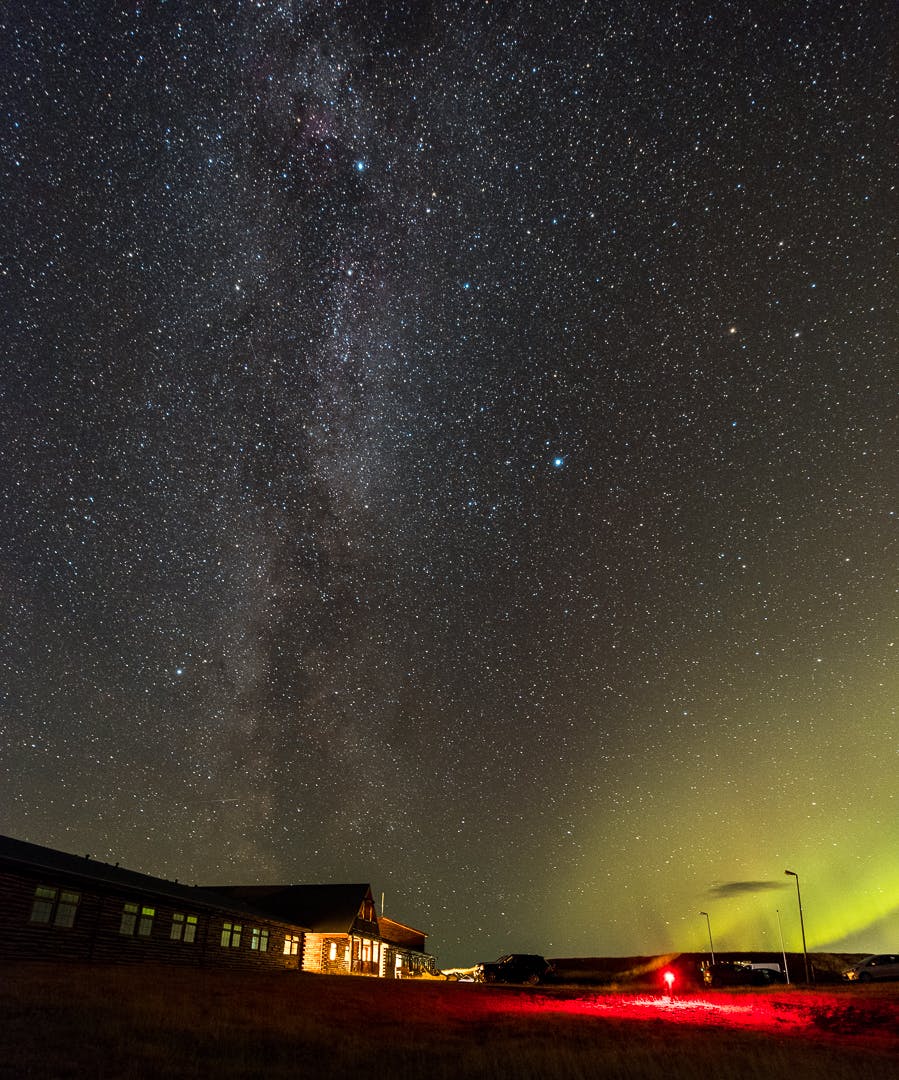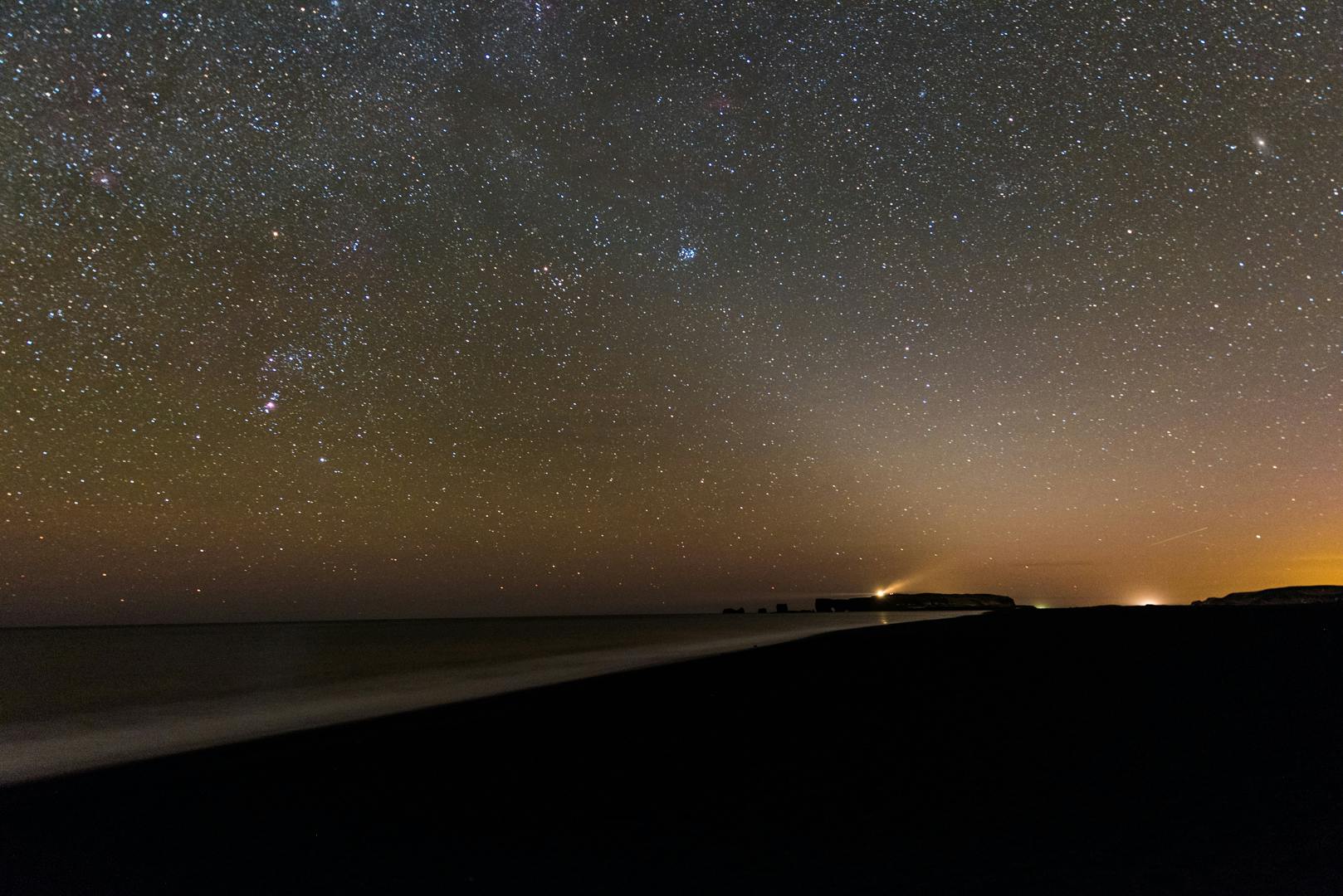
When’s the best time to see the Milky Way from Iceland?
Milky Way is most easily seen from Iceland in the evening sky from late August through September and into October. In the morning sky, it is best seen from February through March to early April.
Our home galaxy, the Milky Way, is a stunning feature of our night sky. To the unaided eye, it appears as a faint band of light across the sky. To see it, you need to be in a place with virtually no light pollution.
Due to Iceland’s high latitude, the Milky Way is not particularly obvious in the Icelandic night sky, unlike lower latitudes where it can be incredibly beautiful.
The Milky Way’s center, the galactic bulge, it’s richest and most beautiful part, is never visible from Iceland because the Earth hides it from view.
Generally speaking, the Milky Way is most easily seen from Iceland when it’s highest in the evening sky from late August through September and into October. In the morning sky, it is best seen from February through March to early April.
In late August and early September however, shortly after twilight, it is possible to see parts of the central area. You need an unobstructed view towards south and southwest to do so. Because Earth’s surface is curved,, it is best seen from the southern coast of Iceland. This is also the best time to photograph the Milky Way and, of course, the Northern Lights too.
The image below was taken by Gwen Mariano during our photography workshop in September 2025 near Gullfoss waterfall. The spray from the waterfall is lit up by the Moon causing a lovely lunar rainbow at night to form. The orange glow is nearby light pollution.

The Milky Way in the evening sky
Time: September evenings. Perfect to see the Milky Way and Northern Lights at the same time.

The Milky Way in the morning sky
Time: March/early April mornings

What is the Milky Way called in Icelandic?
Interestingly, in Icelandic, the Milky Way is referred to as “The Winter Way” (Vetrarbrautin). Why?
We simply don’t see it during summer, from May until late August, because of the midnight sun. The Milky Way is only visible when darkness is sufficient, from late August until mid-April, just like the aurora. A similar name is used in Sweden where it is called Vintergatan.
Will the Milky Way’s center ever be visible from Iceland?
Yes!
Due to the 26 thousand year wobble of Earth's rotational axis, the center of our Milky Way will become visible to Icelanders in about 5000 years or so.
We cannot wait!
In summary
To summarize, the best time to see the Milky Way from Iceland is:
- From late-August into October in the evening sky
- From February into mid April in the morning sky
- Around new Moon
- In rural areas away from light pollution
Coincidentally, this is also the best time, on average, and conditions to see the Northern Lights.

Sævar Helgi Bragason is an award winning astronomy and science communicator and educator, lecturer, author, TV host and owner and editor of icelandatnight.is and eclipse2026.is.


